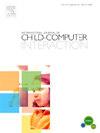The design space of visualization tools for data science education: Literature review and framework for future designs
Q1 Social Sciences
International Journal of Child-Computer Interaction
Pub Date : 2024-10-26
DOI:10.1016/j.ijcci.2024.100698
引用次数: 0
Abstract
Data science education is a rapidly growing field, motivating the development of several tools aimed at engaging students in data-related activities across all educational levels. Within this landscape, new block-based programming (BBP) environments have been developed to integrate data visualization functionalities. However, the construction of visualizations entails distinct goals and forms of interaction from those typically used in conventional programming, which should be considered in designing those environments. Drawing inspiration from taxonomies within the field of Information Visualization, we derived a framework for the analysis of educational tools in this domain comprising four categories: supported goals, expressiveness, abstraction, and transparency. We situate six existing BBP environments within the design space of the framework and illustrate its application by describing the design of PlayData, a BBP environment developed to address a gap in data visualization tools for young audiences. Our goal is to contribute to a more theoretically grounded discussion on the topic by connecting well-established research on professional tools for data visualization and the design of related educational environments targeted at middle and high school students.
数据科学教育可视化工具的设计空间:文献综述和未来设计的框架
数据科学教育是一个快速发展的领域,推动了一些工具的开发,旨在吸引学生参与所有教育水平的数据相关活动。在这种情况下,已经开发了新的基于块的编程(BBP)环境来集成数据可视化功能。然而,可视化的构建需要与传统编程中典型使用的交互不同的目标和形式,在设计这些环境时应该考虑到这一点。从信息可视化领域的分类中获得灵感,我们导出了一个用于分析该领域教育工具的框架,该框架包括四个类别:支持的目标、表达性、抽象性和透明度。我们将六个现有的BBP环境置于框架的设计空间中,并通过描述PlayData的设计来说明其应用,PlayData是一个BBP环境,旨在解决年轻受众在数据可视化工具方面的差距。我们的目标是通过将数据可视化专业工具的成熟研究与针对初高中学生的相关教育环境的设计联系起来,促进对该主题的更有理论基础的讨论。
本文章由计算机程序翻译,如有差异,请以英文原文为准。
求助全文
约1分钟内获得全文
求助全文
来源期刊

International Journal of Child-Computer Interaction
Social Sciences-Education
CiteScore
7.20
自引率
0.00%
发文量
73
 求助内容:
求助内容: 应助结果提醒方式:
应助结果提醒方式:


